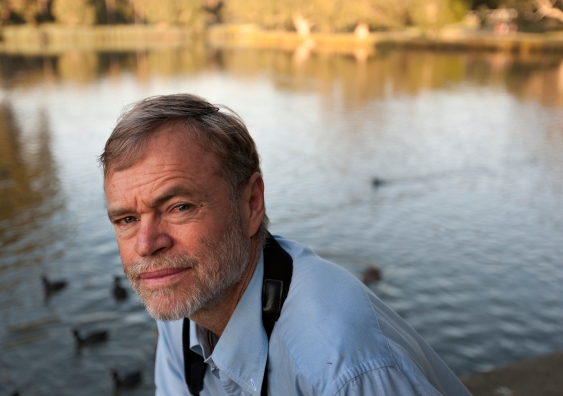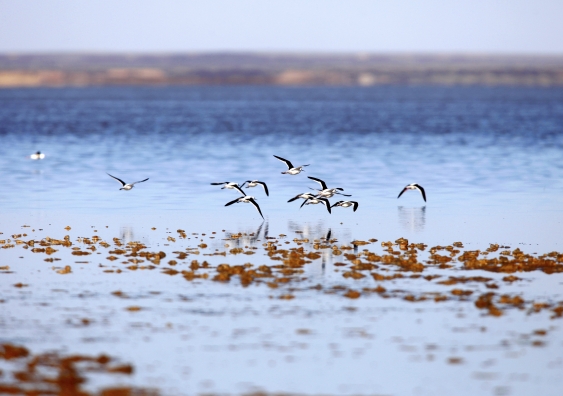Lake Eyre protection partnership up for $500,000 conservation prize
A team including UNSW ecologist Richard Kingsford has been nominated for the International River Prize, one of the world's most prestigious water conservation awards.
A team including UNSW ecologist Richard Kingsford has been nominated for the International River Prize, one of the world's most prestigious water conservation awards.

A river management partnership involving communities, governments, traditional landowners and scientists is nominated for a prestigious conservation prize worth A$500,000.
The International River Prize, to be announced on the 22nd September at a symposium in Brisbane, is intended to recognise and celebrate “outstanding achievements in river management” around the world.
The Lake Eyre Basin Partnership is recognised for its work to protect the river networks that make up the iconic Basin. It is one of three finalists for the prize.
“These important rivers continue to be under threat from water resource development, and today they’re now also threatened by mining developments,” says Professor Richard Kingsford, Director of the UNSW Centre for Ecosystem Science, who helped spearhead the Partnership of disparate groups two decades ago.
“This is a vital part of Australia’s natural heritage and ecological landscape, so scientists, community groups and governments came together to help protect them,” he says. “This is a magnificent achievement.”
The Lake Eyre Basin is one of the largest internally draining river systems on the planet, covering almost one-sixth of Australia – an area of about 1.2 million square kilometres, about the area of Victoria and New South Wales together.
“We have been able to keep the rivers much healthier than many river systems in other parts of the world, a stark contrast to the degradation in the Murray–Darling Basin.”
The rivers and creeks from NSW, South Australia, Northern Territory and Queensland that feed the desert basin undergo a boom and bust cycle, with unpredictable periods of flooding and drying.
“The flows supply waterholes and spectacular wetlands, and rains can deliver an extraordinary explosion of wildlife in the desert, including frogs, turtles and up to a million waterbirds,” Professor Kingsford says. “They also provide a much needed boost to the economies of the region as tourists visit in large numbers.”
In September 2014, the Lake Eyre Basin Partnership won the prestigious Australian River Prize of $200,000, which is invested back into protecting the river.
“We have been able to keep the rivers much healthier than many river systems in other parts of the world, a stark contrast to the degradation in the Murray–Darling Basin,” says Professor Kingsford.
Over 20 years, the team has worked to create a “shared vision” among diverse groups including Aboriginal communities, scientists, conservationists, pastoral and agriculture interests, mining and petroleum industries, tourism, and all levels of government.

Lake Eyre, South Australia. Image: iStock
A key achievement was the Lake Eyre Basin Intergovernmental Agreement focusing state, territory, and federal governments on the overarching goal of cross-border protection of river flows and catchments.
But Professor Kingsford warns that there are still risks to the rivers’ health: “We have to be very vigilant. I am concerned that new threats are appearing. The previous Queensland Government revoked the Wild Rivers legislation, promoting diversion of water for irrigation.
“There is also considerable proposed exploration and possible development of unconventional gas, including coal seam gas and shale gas. This presents a considerable concern for water quality and floodplain impacts.”
The International River Prize is sponsored by the International River Foundation and the global mining company, Thiess. For more information visit the prize's website.